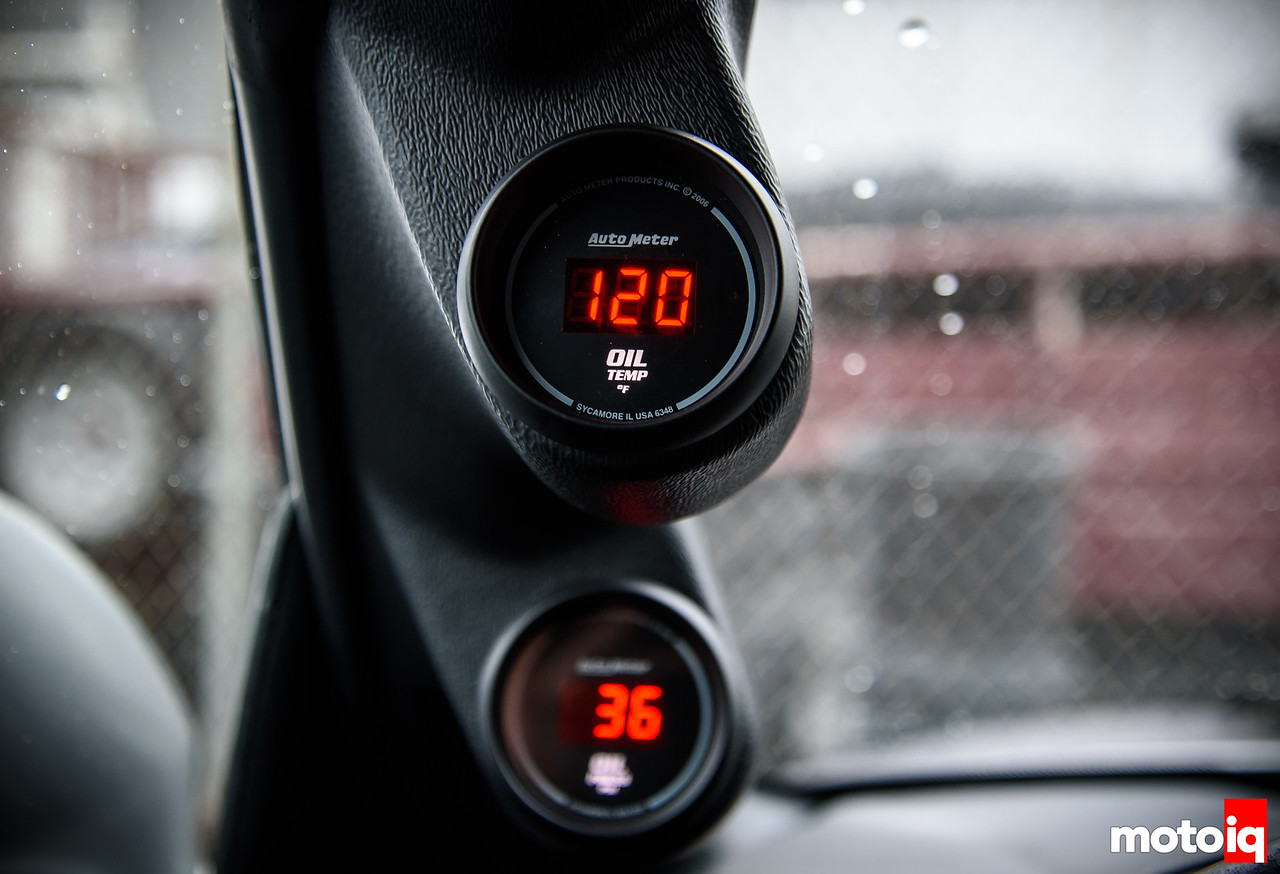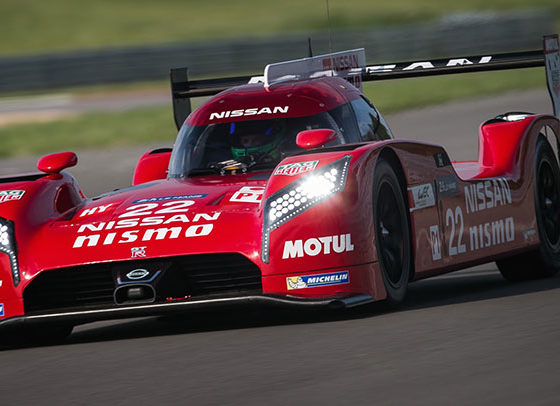
When we last left our AP1 S2000, we had just installed a Canton Racing Products baffled high capacity oil pan to help assure that our F20C engine would always have a good supply of lubricating oil, even under hard cornering and braking. With our engines oil supply secure, we thought that we should have a better way to monitor our motors oil pressure and temperature than just the stock dummy lights for track use. We got some products from Autometer to help make this job a piece of cake.

We got Autometer Sport-Comp digital 0il pressure and oil temperature gauges for our installation into our AP1 S2000. The gauges came with the proper sending units, adaptors and wiring harness to make installation into our car easier.

The Autometer Sport-Comp oil pressure gauge has a reading range of 5-100 psi with an easy to read digital display. Autometers E-Z View display minimizes distracting high-speed digit changes to reduce distraction and to make sure that the driver sees a relevant but accurate readout.

To keep tabs on oil temperature, we are using a Sport-Comp digital oil temperature gauge. For track cars, most of us know about and keep track of coolant temperature. Most of us are blissfully unaware of our oil temperature though because oil overheats silently without clouds of steam emanating from under the hood. The damage caused by getting the oil temps too high is pretty severe though. Engine bearings begin to lose their load bearing capacity when the oil temperature starts to exceed 260 degrees or so. At this point oil also starts to lose its ability to lubricate putting the entire engine at risk.
The Sport-Comp oil pressure gauge has a 0-340 degree operating range. The gauge, like the oil pressure unit, also uses Autometers E-Z view display logic to keep the display from changing digits too rapidly in a distracting way while still keeping the driver viewable information accurate and relevant. The gauge comes with the proper temperature sending unit, adaptors, and wiring for an easy installation.

To make this installation even easier and cleaner, Autometer makes an A-pillar mount that is a nicely molded plastic piece that slips over your A-pillar and holds two gauges.




8 comments
The thread type should be called out as BSPT, to differentiate from BSPP. BPT is an incomplete designation. It is interesting to see the British influence on Japan carries through to this day.
You are very bold drilling a vertical hole through your cowl into the driver’s compartment. Here in the northeast I would be very concerned about water intrusion. I’d be filling that grommet with RTV or some other type of sealant.
I stand corrected, upon closer inspection, it looks like you may have a BSPP (parallel) connection that seals on the face rather than a BSPT connection that seals on the threads.
It is actually not a vertical hole, it just looks that way in pictures and its near other OEM pass-throughs.
I stand corrected, this looks like a BSPP connection that seals on the face rather than a BSPT connection that seals on the threads.
I installed my Oil Pressure and other gauges the exact same way. I was feeling kind of insecure thinking that there could have been a cleaner way to do it (of course there is), but knowing that others have done the same makes me feel validated.
Are these more accurate than an OBD2 gauge (scangauge, plx dm100, etc) ?
As accurate.
Where did you guys get the 1/8″ bspt to -3 an adapter from? I am having a hard time finding one! If you have extra, can I buy it off you guys 🙂 I’m local to socal.